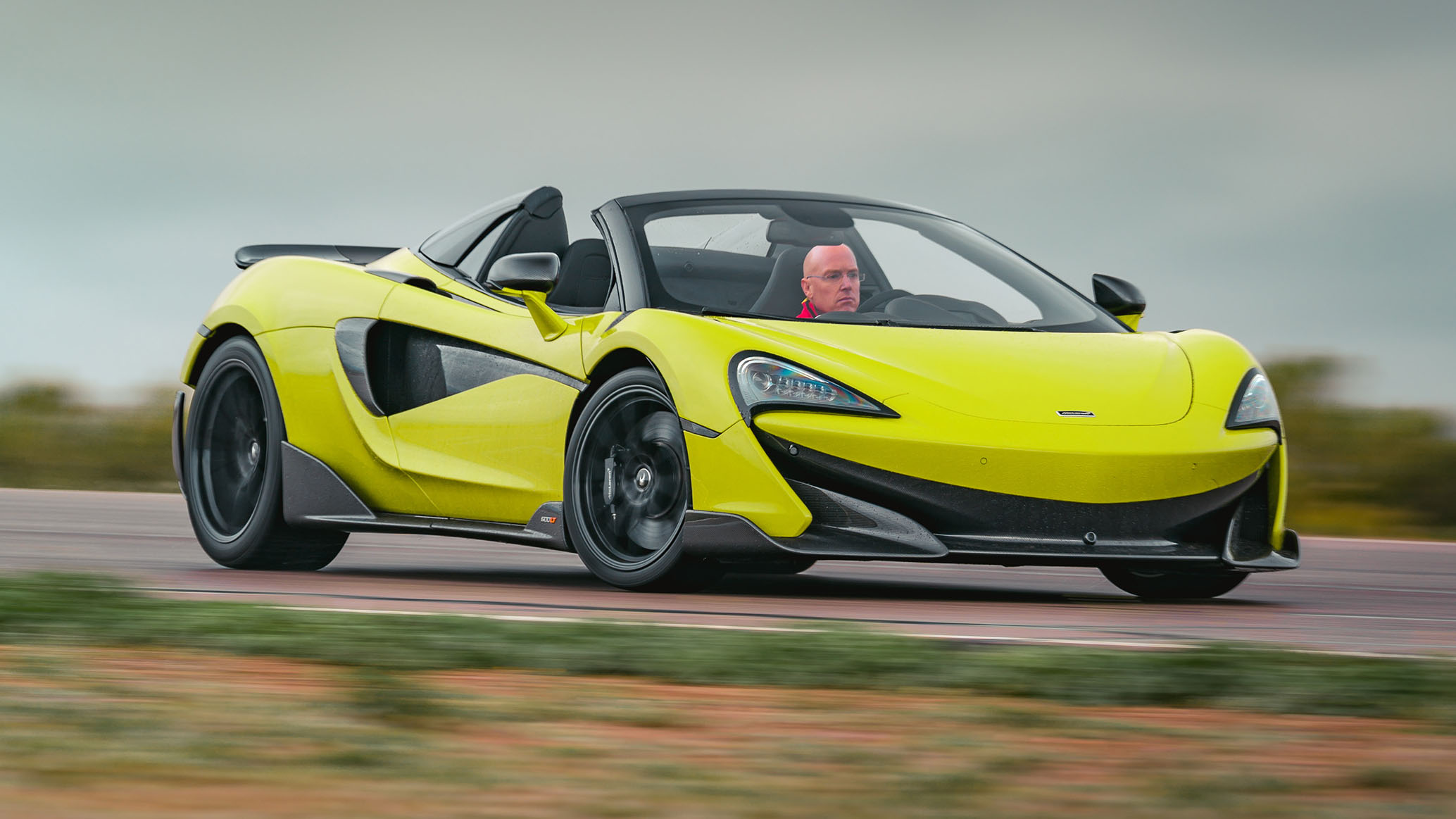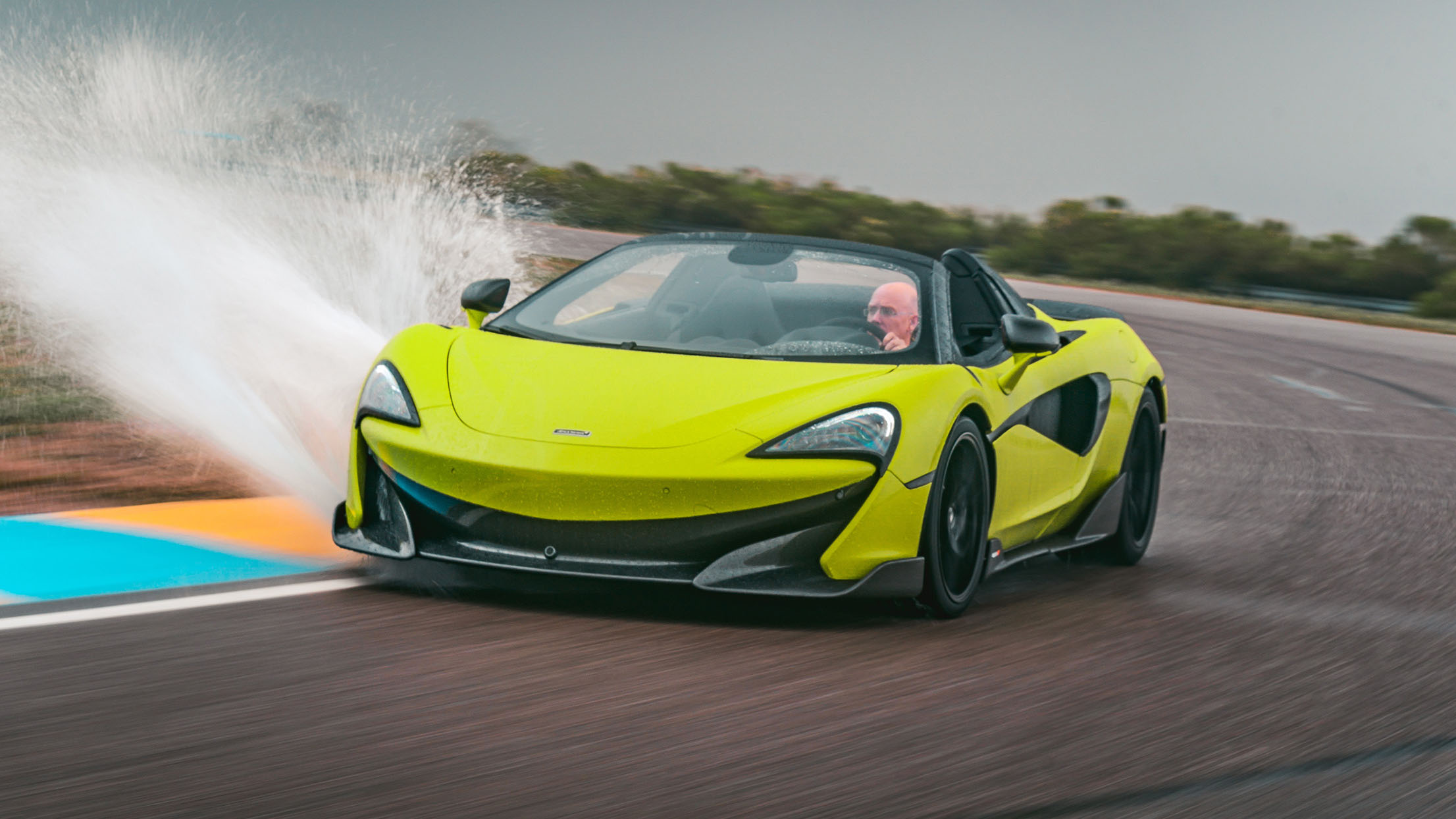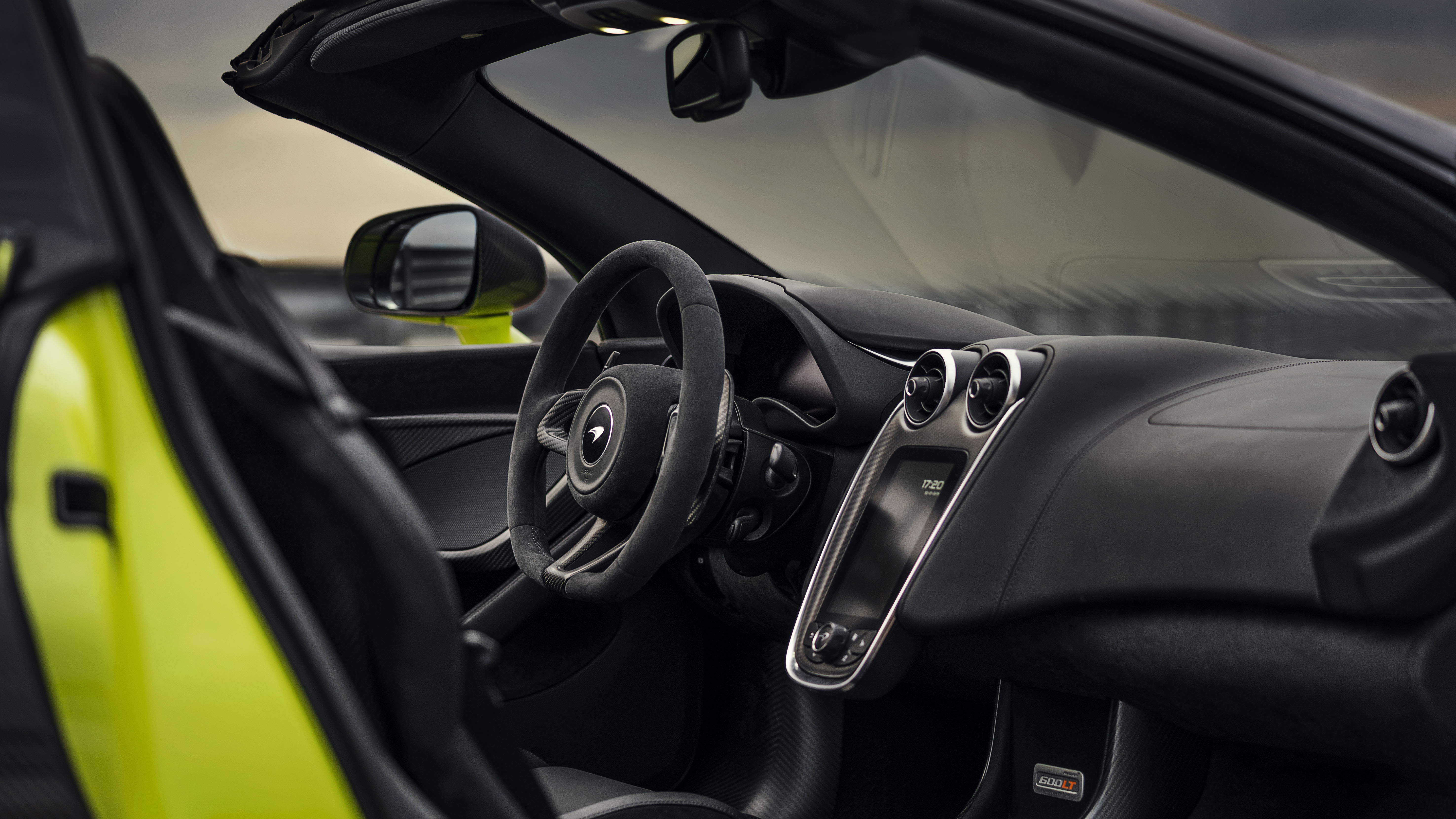
McLaren 600LT Spider review
Driving
What is it like to drive?
McLaren made great claim for the noise of the 600LT coupe, and how much better it sounded thanks to the top exit exhausts. It wasn’t really all that. This, however, is. And it’s all thanks to a neat little trick – the glass rear window can be operated independently of the roof. To get the best from the 600LT you want to keep the roof up to minimise wind noise, but lower the back glass. It’s the single best thing about the Spider, the one chief reason for having one over a coupe.
Not just the volume, but the clarity and hardness of the note. This is important, because the sharpness of the sound partners the dynamics very accurately. The ignition cut gearchanges crack home, the engine rasps in your lughole, the steering dances, the brakes bite – there’s a sense of cohesion to every bit of the car.
Is it as agile as the coupe? I drove them on different circuits thousands of miles apart at different times of year, so it’s hard to be emphatic, but I do think you can detect the extra weight. I’m not sure the Spider is quite as dazzlingly accurate – but then I’m not sure I’ve driven any other supercar that braked and turned in as well as the 600LT did at Clermont Ferrand for our 2018 Performance Car of the Year test. It was mind-blowing.
The Spider, in January, on a drying track in Arizona, isn’t quite as invigorating. Let’s blame track temperature. I’d never call it fuzzy or vague, though. In fact I can’t recall driving any other hardcore super-convertible that gets itself around a circuit with quite the same focus and aggression. The lower, stiffer suspension prevents almost all dive under braking – certainly it never feels like the rear is getting light (the new wing helping here, able to deliver 60kg of downforce to the rear axle at 155mph), and the Spider’s ability to brake and turn in while maintaining its balance is uncanny.
There’s so much feel coming back through the steering (hydraulically assisted, not electric) that you know exactly where you are with available grip, and there’s none of the distortion you get in some convertibles where chassis and steering column can both shudder – and at slightly different frequencies – if you run over a kerb. Have everything ramped up in Track mode and the massive hit of torque you get in second or third when exiting is enough to make up for the momentary delay before it arrives.
Unless the track you’re on is super-smooth you’ll be better off leaving the suspension in Sport mode. Track is noticeably harder, delivering even more feedback, but makes the car feel almost hyperactive. In Sport you can carve smoother lines.
Either way, this is a super-roadster that has an appetite for track work that has to be experienced to be believed. It’s tight, almost ridiculously nimble, has ridiculous braking power from the standard carbon ceramics (124mph to 0 in 121 metres is only five metres more than the P1, and astonishing considering that although it wears Trofeo R tyres, the fronts are only 225-section) and is both braver than the driver, and has more endurance.
Some numbers. Top speed is 201mph. Roof down it’ll still do 196mph. 0-62mph in 2.9secs is a match for the 600LT coupe, while 124mph in 8.4secs lags by 0.2secs. McLaren’s launch control is arguably the best out there for its effectiveness at getting a rear-drive car off the line.
Now, road use. There is naturally more vibration and harshness, a slight buzz through the chassis that jars a fraction if you’re just cruising around with the roof down (there are no carpets, saving over 7kg). The ride is firm and expansion joints slap through the chassis. The brakes, so unfadingly mighty on the circuit now lack sufficient bite at the top end. You need more pressure for them than you expect, which can initially mean you give yourself a panicky moment or two when stopping behind other cars at traffic lights. The Trofeo R tyres had me nervous initially, but they deliver more grip on wet roads than you’d ever expect. Until you hit standing water. Then you’re very glad that you remembered to re-engage the ESP when you left the track.
The 600LT Spider is not an easy-going roadster. Sure, the throttle is beautifully calibrated at low speeds, it’ll self-shuffle up through the gears, the roof works silently, and the ride quality, while positive and intolerant of expansion joints, rounds the edges off bumps brilliantly. The quality of the damping is so good that you find yourself thinking about it more than is strictly necessary, taking pleasure in it the same way you do the steering feel. But all the time it drives with a steeliness that lets you know that crawling around Knightsbridge or Monaco is not what it’s about.
Featured

Trending this week
- Car Review
BMW iX3






